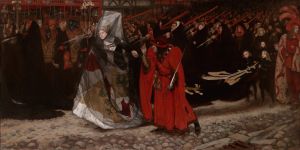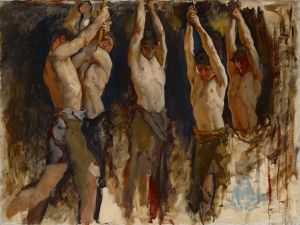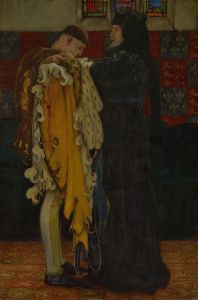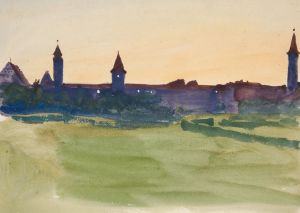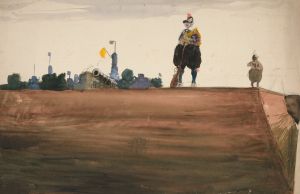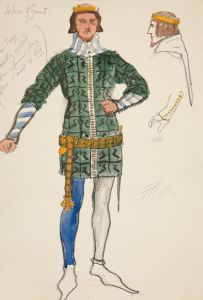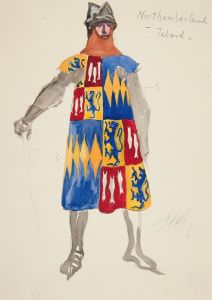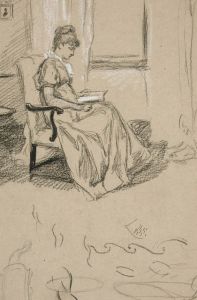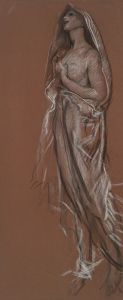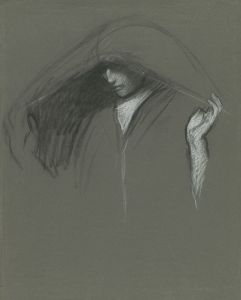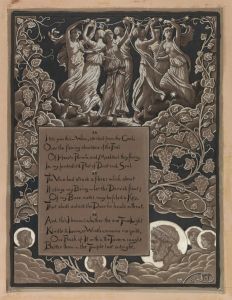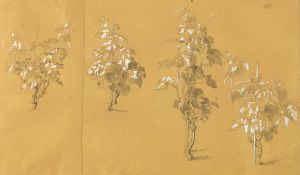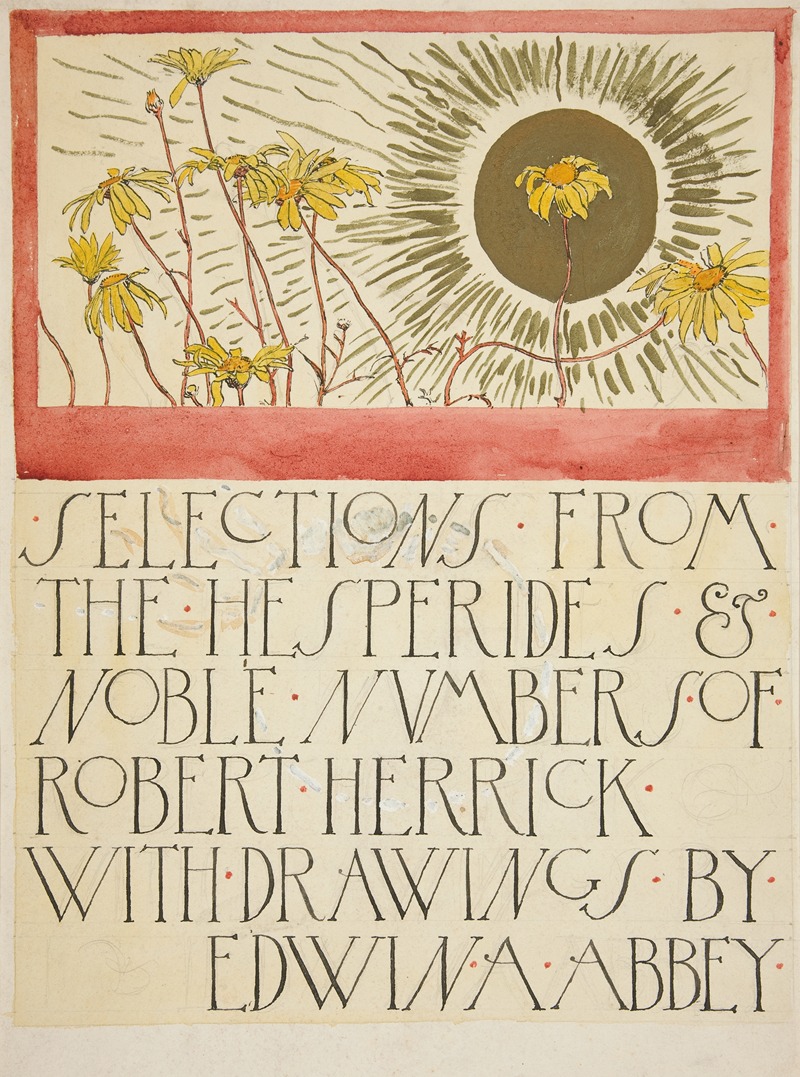
Sketch for an illustration for Selections from the Poetry of Robert Herrick
A hand-painted replica of Edwin Austin Abbey’s masterpiece Sketch for an illustration for Selections from the Poetry of Robert Herrick, meticulously crafted by professional artists to capture the true essence of the original. Each piece is created with museum-quality canvas and rare mineral pigments, carefully painted by experienced artists with delicate brushstrokes and rich, layered colors to perfectly recreate the texture of the original artwork. Unlike machine-printed reproductions, this hand-painted version brings the painting to life, infused with the artist’s emotions and skill in every stroke. Whether for personal collection or home decoration, it instantly elevates the artistic atmosphere of any space.
"Sketch for an illustration for Selections from the Poetry of Robert Herrick" is a work by the American artist Edwin Austin Abbey. Abbey, born in 1852, was a prominent illustrator and painter known for his detailed and historically accurate works. He gained significant recognition for his illustrations of literary works, particularly those of William Shakespeare and Robert Herrick.
This specific sketch was created as part of a series of illustrations for a collection of Robert Herrick's poetry. Robert Herrick (1591-1674) was an English lyric poet and cleric, best known for his book "Hesperides," which includes the famous poem "To the Virgins, to Make Much of Time." Herrick's poetry often explores themes of love, nature, and the passage of time, characterized by its lyrical quality and classical references.
Edwin Austin Abbey's illustration work for Herrick's poetry was commissioned in the late 19th century, a period when there was a revival of interest in English literature from the Renaissance and Baroque periods. Abbey's illustrations were intended to complement the text, providing visual interpretations that captured the essence of Herrick's poetic imagery.
The "Sketch for an illustration for Selections from the Poetry of Robert Herrick" showcases Abbey's meticulous attention to detail and his ability to convey the mood and themes of the poetry through his art. The sketch likely includes elements typical of Herrick's work, such as pastoral scenes, classical motifs, and figures in period costume, reflecting the poet's 17th-century context.
Abbey's technique involved extensive research and preparation, often creating numerous sketches and studies before finalizing his illustrations. His work is noted for its historical accuracy and the careful rendering of textures and details, which bring the literary subjects to life. Abbey's illustrations for Herrick's poetry would have been executed in pen and ink or pencil, mediums that allowed for precise line work and intricate detailing.
The collaboration between Abbey's illustrations and Herrick's poetry would have provided readers with a richer, more immersive experience, bridging the gap between visual art and literary expression. Abbey's contributions to the illustration of literary works have left a lasting impact on the field, influencing subsequent generations of illustrators and artists.
In summary, "Sketch for an illustration for Selections from the Poetry of Robert Herrick" by Edwin Austin Abbey is a testament to the artist's skill in bringing literary works to life through his detailed and historically informed illustrations. Abbey's work continues to be celebrated for its artistic merit and its role in enhancing the appreciation of classic English literature.






